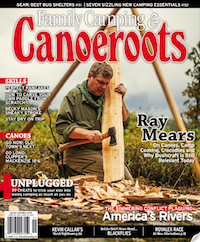We live in a small town.
How small is it? The public school has only 128 kids spanning from junior kindergarten to Grade 8. There are only nine kids in my daughter Kate’s Grade 3 class. This means when she graduates, she will have a choice of three boys for prom (there are actually five boys in her class, two of which we’ve already agreed would be poor choices). There are few of the extra clubs, sports and trips you’d find at larger city schools.
Mr. Roberts was the principal of the country public school I attended. He wore a suit and tie every day. He was all business, all the time.
My mom had sent me to school with a note letting my teacher know that my father would be picking me up early. I would be missing my afternoon classes.
“Sit down, Mr. MacGregor, please,” said Roberts pointing to a chair in his office. He looked both ways down the hall and shut his door. I was sure I was going to get it.
When he sat down at his desk, he leaned forward and whispered, “I wish more parents would take their kids to the Sportsmen’s Show.”
The secret was out and I waited for the catch. There wasn’t one.
“You’ll learn more this afternoon at that show than we can teach you in this place all week,” he said.
He told me how important he thought it was for his students to look outside school to experience different things.
Today, elementary teachers would say that Roberts understood cognitive theory and subscribed to schema learning. Children use schemas, an organized pattern of thought, to construct an understanding of the world around them. When they experience discrepancies between what they already know and what they discover, everything inside gets juggled and their understanding of the world changes. The more schemas or bits of information or experiences we’ve logged, the better.
Alpine skiing. Catching frogs. Portaging. Baiting hooks. Rock climbing. Playing in the ocean. Fire building. Summer camp. It all adds to their understanding of the world.
When I was home visiting my parents this past Christmas I was digging around in my old bedroom. Tucked in the back corner of my closet I found a plastic bag full of dog-eared canoe brochures and camping catalogs.
My dad is a hunter and fisherman, not a paddler. My mom has never slept in the woods. If not for the wisdom of a progressive school principal and my annual trips to spring tradeshows it’s unlikely I’d have had the interest to take an outdoor education credit in high school. It’s unlikely I’d have had the confidence to transfer from an engineering program to an outdoor recreation degree in university. It’s even more unlikely I’d have created Canoeroots magazine.
We know that direct exposure to nature is essential for healthy childhood development. What we don’t know is which little bits of knowledge or experience will be the building blocks for their futures. And really, who cares? That’s for them to figure out along the way. Our job as parents is to have fun with our kids sharing the things we love.

Subscribe to Paddling Magazine and get 25 years of digital magazine archives including our legacy titles: Rapid, Adventure Kayak and Canoeroots.



